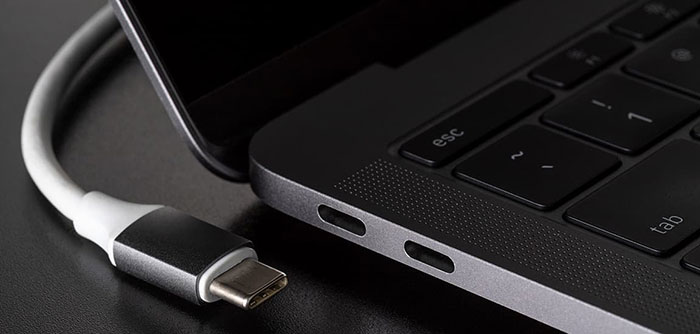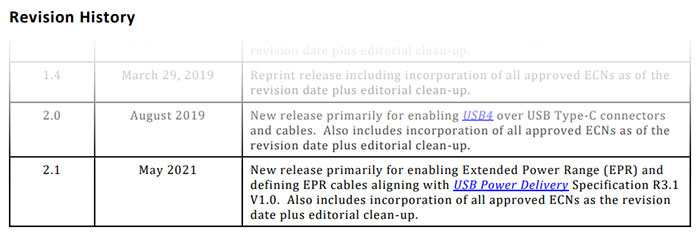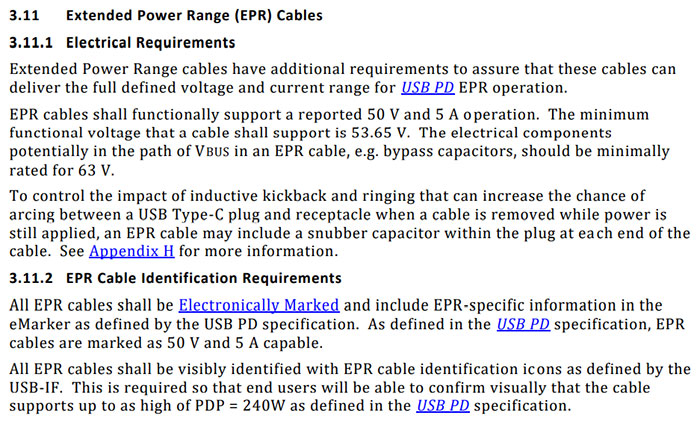The USB Implementers Forum (USB-IF) has announced USB Type-C cable and connector specification revision 2.1. Within the revised spec the key change appears to be in the upgrading of the USB Power Delivery from 100W maximum to 240W. This change should hopefully mean that all but the most powerful laptops will benefit from an alternative charging method when for some reason the owner doesn't have the supplied charger at hand. The uplift from 100 to 240W max may be capable of powering larger monitors and printers too.

In the latest specification documentation the uplift to 240W PD is described as an option called Extended Power Range, or EPR. There are already some chargers supplied with devices that have busted the previous 100W limit, like a USB-C Dell laptop dock (130W), but it uses a captive cable to prevent use willy-nilly.

The problem with 100W PD is that it is just a little anaemic for some mainstream laptops, never mind gaming goliaths. Sometimes modern laptops with USB-C allow trickle charging or for the user to maintain the charge using a USB charger when the original power brick is absent, but this isn't always the case depending on laptop brand/model.

One of the most powerful modern laptops that has been in the HEXUS labs, the Asus ROG Strix G17 G713Q, comes with a 240W power brick, so could in theory be adequately powered by a new USB-C 2.1 spec charger, but I don't think its Type-C port is compatible, it doesn't include the PD icon next to the port either.

Of course, you will need new USB-C chargers and cables to make use of the new EPR specification. With a standard ports like the reversible USB-C design there is probably going to be a problem with users trying under-spec cables but the USB-IF says that "All EPR cables shall be visibly identified with EPR cable identification items".













